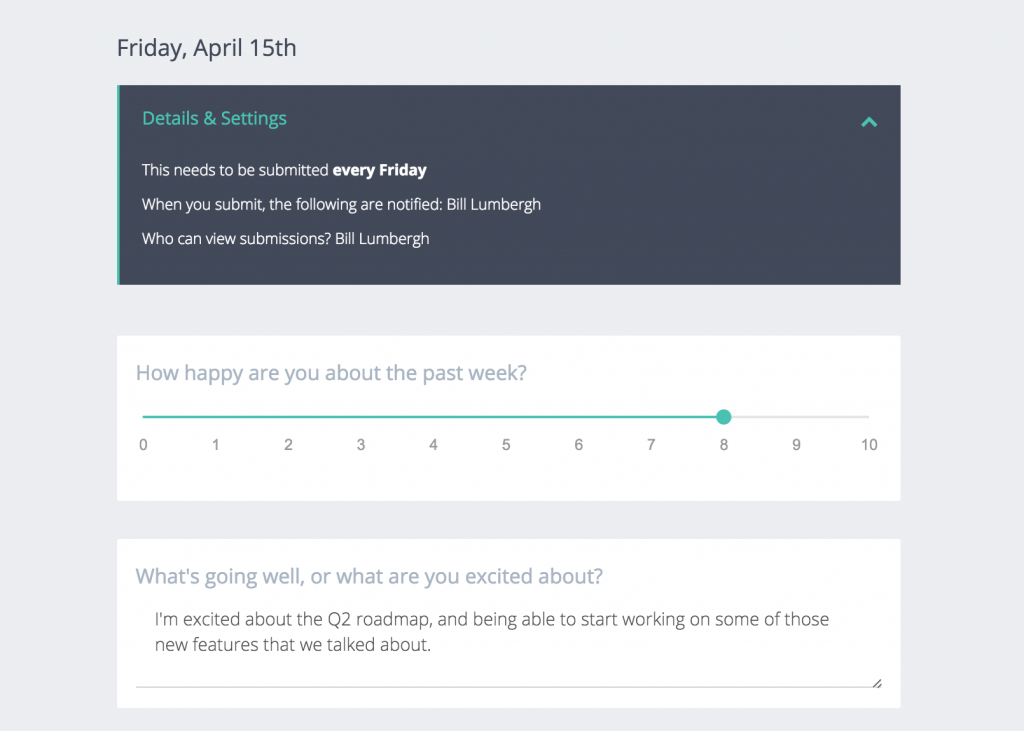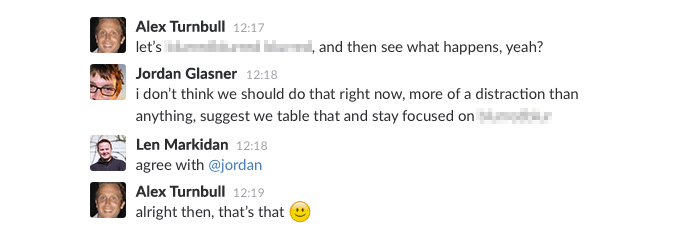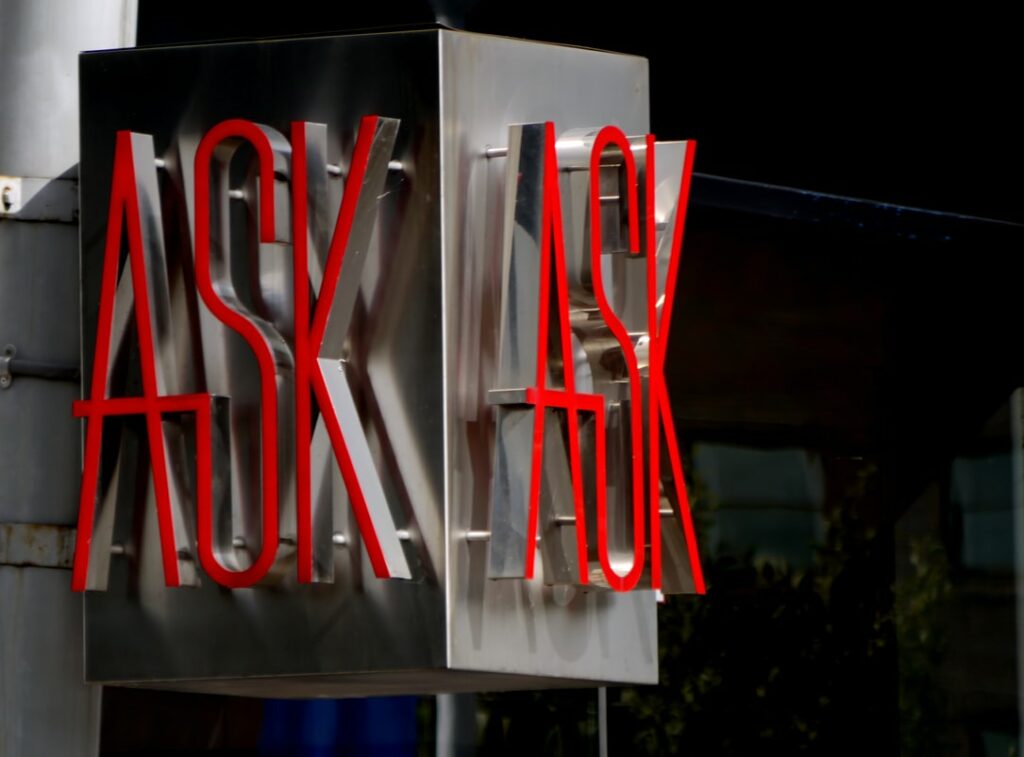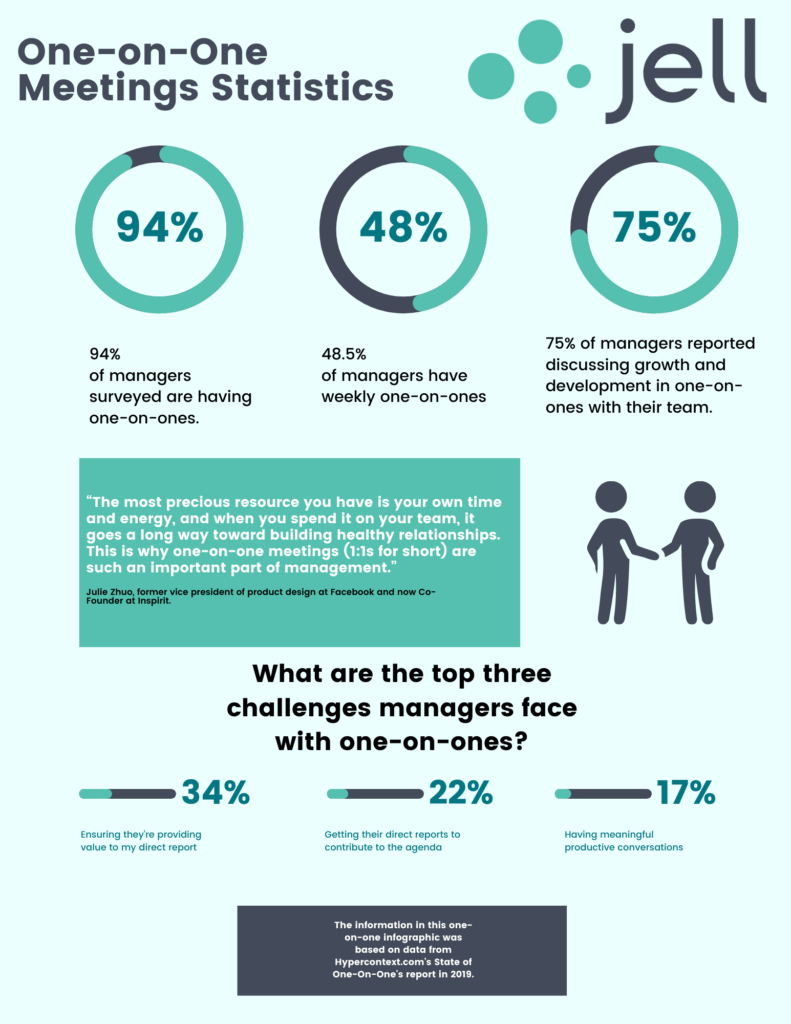 Did you know that the top tech teams utilize one-on-one meetings? The senior manager of software development at Rackspace regularly blocks off time to sit down with each member of his team and see how things are going. So do managers at Dropbox, LinkedIn, and Atlassian. So does Ben Horowitz.Do you know which companies have experienced incredible success? Rackspace, Dropbox, LinkedIn Atlassian, and Andreessen Horowitz. (Need some proof? Check out this, this, this, this, and this.) It’s almost as if the two things are connected… In fact, the leaders behind numerous famous and fast-growing brands don’t just hold one-on-one meetings. They encourage managers everywhere to use them. They’ve penned blogs and devoted entire book chapters to describing their cruciality.While we spend a lot of time at Jell helping teams eliminate meetings that are unnecessary, the one-on-one meeting does not fall into that category. This is one recurring meeting that your team genuinely needs.
Did you know that the top tech teams utilize one-on-one meetings? The senior manager of software development at Rackspace regularly blocks off time to sit down with each member of his team and see how things are going. So do managers at Dropbox, LinkedIn, and Atlassian. So does Ben Horowitz.Do you know which companies have experienced incredible success? Rackspace, Dropbox, LinkedIn Atlassian, and Andreessen Horowitz. (Need some proof? Check out this, this, this, this, and this.) It’s almost as if the two things are connected… In fact, the leaders behind numerous famous and fast-growing brands don’t just hold one-on-one meetings. They encourage managers everywhere to use them. They’ve penned blogs and devoted entire book chapters to describing their cruciality.While we spend a lot of time at Jell helping teams eliminate meetings that are unnecessary, the one-on-one meeting does not fall into that category. This is one recurring meeting that your team genuinely needs.Eliminate Unnecessary Meetings
Daily Standup, Check-ins, &OKRs.
14-day free trial. No credit card required.
Related Articles
One-on-One Workbook
Leadership Team Development: How to Get Your Team Back on Track
How To Avoid The Common Mistakes Of First-Time Managers
If you’re looking to get started with your first 1:1 meeting or want to improve the outcomes of your existing meetings, in this post, we’ll look at:- Why the one-on-one meeting is essential
- Common components of productive one-on-ones
- Mistakes that can wreck an otherwise perfectly good meeting
- Two techniques to transform your one-on-one meeting
Why bother with a one-on-one meeting? Because this really happened…
 Several years ago, I was the CEO of a venture-backed startup that had grown to 30+ employees. We had a lot of things going well for us—incredible growth and a stellar team. But I could start to see some cracks forming. A couple of employees surprised us with resignations, and I could see that some of our star employees weren’t as engaged as they had been in the past.There were a number of reasons this happened, but there was one thing in particular that stood out to me: I could directly correlate employee engagement with the dynamics of each employee-manager relationship.Without exception, the best managers in the company were religiously holding one-on-ones with their employees. Each employee felt a one-on-one meeting was valuable and that they got something out of holding them regularly.And the least engaged employees? Their one-on-ones were usually moved around or canceled frequently. Or they felt like they weren’t really getting an opportunity to give feedback or get questions answered. In other words, the meeting agenda wasn’t their own.Granted, one-on-ones aren’t the only element of a positive manager-employee relationship. But they certainly play a key role.In his 1983 classic High Output Management, Andy Grove had this to say:“It turns out that the one-on-one meeting is not only a fundamental element in the manager/employee relationship but perhaps the best source for organizational knowledge that a manager can get. In my experience, managers who don’t have one-on-ones understand very little about what’s happening in their organizations.”Grove was an iconic CEO at Intel. He’s one of modern history’s most influential figures in technology and business. The practical management advice presented in his book has garnered a cult following that includes the likes of Mark Zuckerberg, Ben Horowitz, Airbnb CEO Brian Chesky and dozens of other influential CEOs.So when he says effective one-on-one meetings are what separates the dream teams from the Dunder Mifflins of the world, well…They’re kind of a big deal.But only if you get them right.
Several years ago, I was the CEO of a venture-backed startup that had grown to 30+ employees. We had a lot of things going well for us—incredible growth and a stellar team. But I could start to see some cracks forming. A couple of employees surprised us with resignations, and I could see that some of our star employees weren’t as engaged as they had been in the past.There were a number of reasons this happened, but there was one thing in particular that stood out to me: I could directly correlate employee engagement with the dynamics of each employee-manager relationship.Without exception, the best managers in the company were religiously holding one-on-ones with their employees. Each employee felt a one-on-one meeting was valuable and that they got something out of holding them regularly.And the least engaged employees? Their one-on-ones were usually moved around or canceled frequently. Or they felt like they weren’t really getting an opportunity to give feedback or get questions answered. In other words, the meeting agenda wasn’t their own.Granted, one-on-ones aren’t the only element of a positive manager-employee relationship. But they certainly play a key role.In his 1983 classic High Output Management, Andy Grove had this to say:“It turns out that the one-on-one meeting is not only a fundamental element in the manager/employee relationship but perhaps the best source for organizational knowledge that a manager can get. In my experience, managers who don’t have one-on-ones understand very little about what’s happening in their organizations.”Grove was an iconic CEO at Intel. He’s one of modern history’s most influential figures in technology and business. The practical management advice presented in his book has garnered a cult following that includes the likes of Mark Zuckerberg, Ben Horowitz, Airbnb CEO Brian Chesky and dozens of other influential CEOs.So when he says effective one-on-one meetings are what separates the dream teams from the Dunder Mifflins of the world, well…They’re kind of a big deal.But only if you get them right.How to structure Productive One-on-One Meetings
Ask ten different managers how to hold effective one-on-ones, and you’ll get ten different answers.I know because I’ve been reading up a lot on how various people approach them.Most managers agree on the basics: Be consistent. Avoid distractions. Conclude with next steps.But delve into the fundamentals, and the methods used to structure one-on-one meetings vary dramatically. Some swear you’ll need to set aside at least an hour for each employee, while others state 15 to 30 minutes should be the max. Some one-on-ones are driven purely by instinct; others require set agendas.The conclusion I’ve come to is this:There’s no single format that’s going to apply consistently to every meeting with every employee. In fact, the structure probably should vary a bit based on personality and preferences.At the same time, there are several techniques that will help make virtually any one-on-one meeting more productive.There are also a few bad habits to break or avoid.4 Faux Pas That Can Kill a Perfectly Good One-on-One Meeting
 Some easy-to-make mistakes can hijack an otherwise productive one-on-one and turn it into a time waster. You don’t want to do these things.
Some easy-to-make mistakes can hijack an otherwise productive one-on-one and turn it into a time waster. You don’t want to do these things.1) Over preparing
The responsibility of preparing for one-on-ones should fall primarily to your employee. The reason for this is simple. If you manage a team of ten people, you would have to prepare for ten meetings. Your team members will prepare for just one.Another reason to avoid spending too much time getting ready for one-on-ones: This meeting is a chance for your employees to talk, share, vent and open up. By giving them control to set the pace and tone, you enable them to become comfortable discussing the issues that truly matter to them.Ben Horowitz said it best:“The key to a good one-on-one meeting is the understanding that it is the employee’s meeting rather than the manager’s meeting. This is the free-form meeting for all the pressing issues, brilliant ideas and chronic frustrations that do not fit neatly into status reports, email and other less personal and intimate mechanisms.”It’s important to strike a balance between agenda-driven discussion and casual conversation. I like to ask my team members to answer a few key questions ahead of time so that I can be thinking about their answers in advance of the meeting.
2) Being inconsistent
Leadership coach Kristi Hedges neatly summed up the consequences of irregularly holding a one-on-one meeting in a column published by Forbes:“It’s natural that other work may come up that causes you to reschedule but beware. I can’t count the number of complaints I’ve heard from employees that their managers never stick to their one-on-ones—sending the message that the employee is the most expendable action item on the schedule. Try to stick with the meetings and have cancellations be the exception.”Although many recurring meetings can do more harm than good, the opposite is true of a one-on-one meeting. Make a schedule and stick to it.3) Avoiding criticism
Believe me, I know. Accepting constructive criticism can be tough. But our job in these meetings is to listen, learn and coach—even when it means addressing uncomfortable issues involving things you could be doing differently.When you encourage your employees to talk about challenges they’re facing—and I believe you should—the next natural step is to discover what you can be doing to help. Questions such as, “Do you have any suggestions for me?” can open the doors to straightforward, substantive discussions.Be ready to listen and react with solutions that help move things forward, even when it means changing your own approach.For example, Groove CEO Alex Turnbull noticed a big shift in overall team communication after making one simple change. During a one-on-one meeting, he asked people to be more open about how they were feeling and extended “an invitation to be honest, even with negativity.”Soon, he says, team members were feeling empowered and safe enough to voice honest opinions on a regular basis.
4) Failing to be present
Push notifications and desktop alerts are the enemies of productive one-on-ones. So is an open office door and tables positioned smack dab in the middle of open floor plans. Nothing will prevent your employee from opening up quite like a decision to engage in “drive-by” conversations with other colleagues mid-meeting.Silence your phone, go out for coffee or find a quiet corner and make sure people know this is not a time to be interrupted. If there’s a true emergency, they’ll find you.If the one-on-one is conducted remotely through video conferencing, eliminate all potential distractions before the session begins.Not sure if you’re giving your employees the attention they deserve during a one-on-one meeting? Try using this approach from Jolie Miller, a senior manager at Lynda:Before your next series of one-on-one meetings, ask yourself the following questions to test your knowledge of each employee:- What are her long-term career plans?
- How happy is he at work?
- Does she have any frustrations I can help with?
- Is he performing well?
- Are there areas of potential improvement I can coach them on?
Track Your Plans and Progress
Daily Standup, Check-ins, &OKRs.
14-day free trial. No credit card required.
1) Let your employees run the show
The one-on-one meeting is not for you—at least not directly. The focus should be on your employee. This isn’t a time to talk about tactics or get updates on a project’s status. It’s a time for open-ended conversations. For mentoring. For coaching. For venting, when it’s needed.It “goes beyond an open door policy and dedicates time on a regular cadence for teammates and leaders to connect and communicate.” (I stole that line from Asana. Because it’s a really good one.)The one-on-one should be considered the employee’s meeting. You’re there to learn about all the things that aren’t nearly as visible as the status of a project or to-do list.Look at it this way:Where is an employee going to go when a particular coworker’s decisions are forcing her to put in extra hours unnecessarily? When a personal tragedy is impacting his ability to focus at work? When she’s not getting the logistical support she needs to achieve an important milestone?Are those things your employees will post to Slack? Include in an email? Address in a status meeting? Would you want them to?You need to have one-on-one conversations to learn about and address these kinds of issues.If you ever hear an employee say something like, “Now that we’ve talked it through, I’m much more comfortable about this issue” or “Now I get it,” those sentiments are sure signs your one-on-one meeting is working effectively.Grove offers a very simple approach in his book that can be highly effective:- Ask your employee to prepare an outline for the meeting, as well as any supporting documentation, if needed. This will force him to think through all of the issues and points he plans to raise.
- Have him share the outline with you in advance. This allows you to help set the pace of the meeting according to the “meatiness” of the items to be discussed.
- Let your employee walk you through all the materials.
2) Ask good questions
 Have you ever sat at the table with someone who made you feel really understood? You tell a story, he asks a question, you answer. He’s intrigued. And so he asks another. And another. You feel heard. Understood. Important.You were in the presence of a listener.These people instinctively know how to ask the questions that get people to open up. They react to answers and prod where appropriate to keep the conversation going.They’re great at one-on-ones. They instinctively follow Horowitz’s 90-10 rule: Managers should do 90% of the listening and just 10% of the talking.The problem? For many of us, that kind of active listening doesn’t come naturally. It can be especially challenging when the one-on-one is with someone who has a thoughtful, introverted work personality and is accustomed to doing a lot of listening to himself.The solution is simple. Arm yourself with a long list of excellent one-on-one questions. Then choose a few for each meeting. If you want to make a one-on-one meeting more productive, begin by asking those questions ahead of time.For example, at Rackspace, software development manager Juan Montemayor sends each employee a set of three “pre” one-on-one meeting questions:
Have you ever sat at the table with someone who made you feel really understood? You tell a story, he asks a question, you answer. He’s intrigued. And so he asks another. And another. You feel heard. Understood. Important.You were in the presence of a listener.These people instinctively know how to ask the questions that get people to open up. They react to answers and prod where appropriate to keep the conversation going.They’re great at one-on-ones. They instinctively follow Horowitz’s 90-10 rule: Managers should do 90% of the listening and just 10% of the talking.The problem? For many of us, that kind of active listening doesn’t come naturally. It can be especially challenging when the one-on-one is with someone who has a thoughtful, introverted work personality and is accustomed to doing a lot of listening to himself.The solution is simple. Arm yourself with a long list of excellent one-on-one questions. Then choose a few for each meeting. If you want to make a one-on-one meeting more productive, begin by asking those questions ahead of time.For example, at Rackspace, software development manager Juan Montemayor sends each employee a set of three “pre” one-on-one meeting questions:- How are you feeling?
- Is there anything you want to make sure we talk about?
- Is there anything you need me to take action on immediately?
 At Jell, we feel that one-on-ones are such an important part of effective leadership—and that asking the right questions is so crucial to driving a successful meeting—that we added the ability to ask one-on-one questions in our reporting feature.We’re also putting together a list of essential questions that can be used both before and during meetings to improve the outcomes of one-on-ones. I’ll post it here shortly. In the meantime, I’d love to hear about your experiences with a one-on-one meeting on Twitter.
At Jell, we feel that one-on-ones are such an important part of effective leadership—and that asking the right questions is so crucial to driving a successful meeting—that we added the ability to ask one-on-one questions in our reporting feature.We’re also putting together a list of essential questions that can be used both before and during meetings to improve the outcomes of one-on-ones. I’ll post it here shortly. In the meantime, I’d love to hear about your experiences with a one-on-one meeting on Twitter.